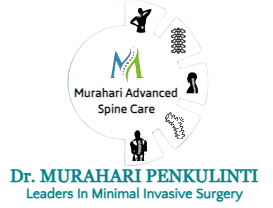Murahari Advanced Spine Center
Spinal Tumors
Spinal Tumors
A spinal tumour is an abnormal mass of tissue within or surrounding the spinal cord and spinal column in which cells grow and multiply uncontrollably. Spinal tumours are classified by grade, origin, and location. Spinal tumours are graded as benign (non-cancerous) or malignant (cancerous). Primary spinal tumours originate in the spine or spinal cord, and secondary or metastatic spinal tumours are the result of cancer that has spread from another site in the body to the spine.

Spinal tumors may also be referred to by the area of the spine in which they occur. These basic areas are the cervical (neck area), thoracic (mid-back), lumbar (lower back), and sacrum (bone at the end of the spine). Additionally, spinal tumours are also classified by their location in the spine: anterior (front) and posterior (back).
Spinal Anatomy:
The spine is made up of bones, muscles, and ligaments. They work together to provide structural support to the body and protect nerves that control important body functions, as well as sensation and movement.
Vertebrae are the bones of the spine that are stacked one on top of another, beginning at the base of the brain. Around and between the vertebrae are nerves, joints, muscles, and cartilage. Five vertebrae joined together in the lower back are called the sacrum. The tailbone (coccyx) includes the bottom three vertebrae.
Symptoms and Diagnosis of Spinal Tumors:
- Pain that does not diminish with rest, pain that may be worse at night than during the day, or unprovoked, deep- aching pain.
- Muscle weakness (myopathy) or numbness in the arms or legs.
- Numbness, tingling, or general loss of sensation.
- Difficulty with urination (incontinence).
- Change in bowel habits (retention).
